By Tara Lee
Hot pot takes on many different forms within China and across Asia, including countries like Japan, Thailand, and Vietnam. In the past year, Richmond has seen the opening of many new restaurants that offer a spicy kick. Chongqing and Chengdu are styles of hot put and cities in southwestern China that share cultural roots in Sichuan cooking. Chongqing is known as the birthplace of hot pot and a visit to either city necessitates a hot pot eating experience.
If you’re looking to get a taste of this southwestern Chinese style of hot pot, Richmond has much to offer you. Two establishments worth visiting are To Hot (130-8171 Ackroyd Road) and Yuan’s Chuang Chuang Xiang (Aberdeen Centre, 4151 Hazelbridge Way). They’re both innovative in their own ways, modern in their décor, and definitely lip-smacking in flavour profiles. Armed with an open palate – and an empty stomach, I decided to pay a visit to each.
To Hot
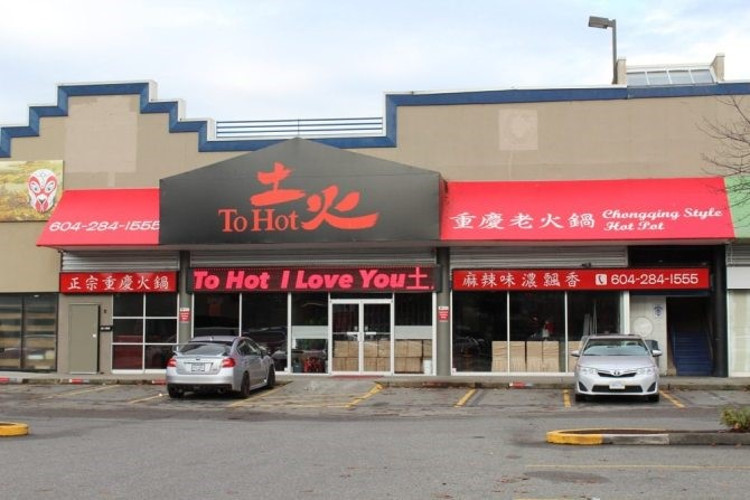
Situated in a strip mall on Ackroyd Road, To Hot, which bills itself as a Chongqing style hot pot restaurant, greets customers with a bright red awning and red signage. I went alone, but cost, portion, and fun-wise, it makes more sense to go with at least one other person, or even a small group.
The interior is inviting, with high ceilings, lacquered wood booths and bench seating, and modern accents. The servers do their best to overcome any language barrier and explain printed Chinese instructions.
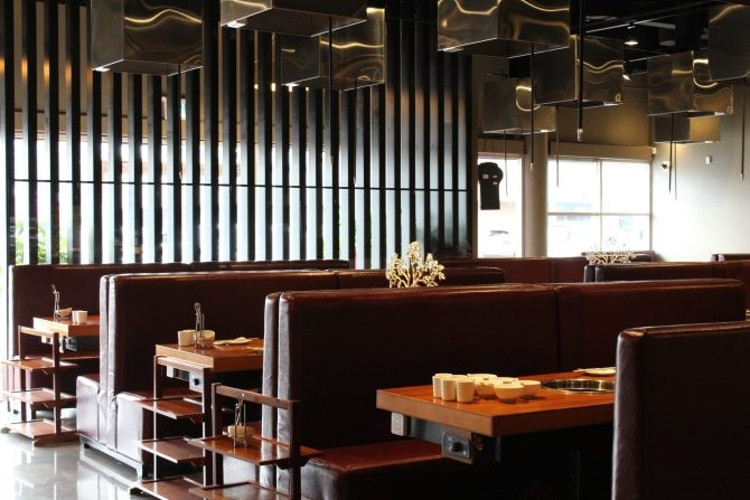
You’ll be presented with a card and a sheet upon arrival before being shown to a table.
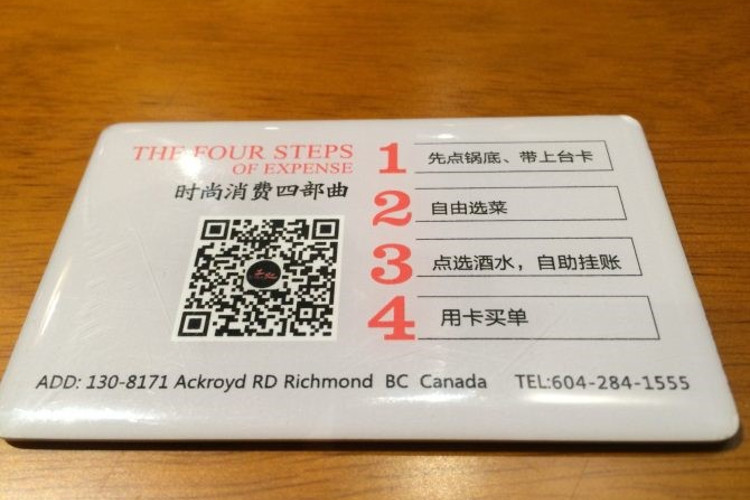
The sheet is self-explanatory if you can read Chinese. If not – let the servers help you pick your broth and any proteins you want to add. Broth selections include original Chongqing style, pork rib soup, and duck with pickled vegetable soup (ranging from $9.95-$32.95, with the option of having two flavours with no additional charge). Proteins include Wagyu beef, oysters, spot prawns, and spicy pork ribs (ranging from $7.95 to $29.95). The sheet also allows you to order a variety of side dishes, like lamb fried rice ($5.95) and green onion pancakes ($6.95), as well as drinks.
The next step is a bit tricky if you’re visiting the restaurant for the first time (and I was). I knew that I had to do something with the card, but I wasn’t entirely sure what. My helpful server, seeing my confusion, ushered me over to the end of the room, to a refrigerated section full of all sorts of prepared ingredients for supplementing the order sheet.
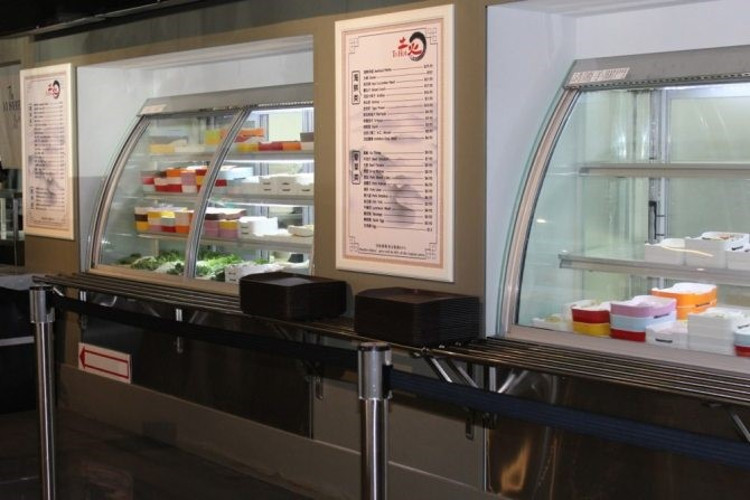
I saw various types of mushrooms, vegetables, as well as noodles, seafood (even sea cucumber), and organ meat (such as pork liver). It all looked incredibly fresh and carefully presented.
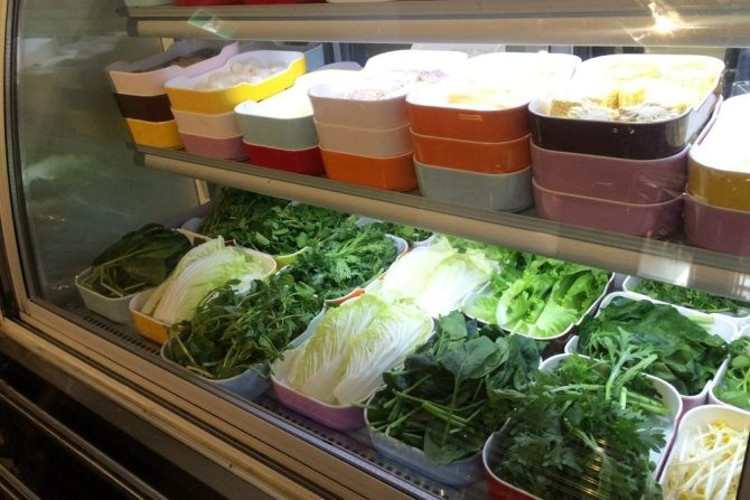
Basically, what you do here is load a tray with the items you desire and then take them to a swiping station, located to the side. You place your tray on the station and the screen will tally up how much they’ll cost. If you’re happy with your order, you swipe your card. Ta-da! It’s all very high tech and impressive. Items can add up though, so make your selections carefully.
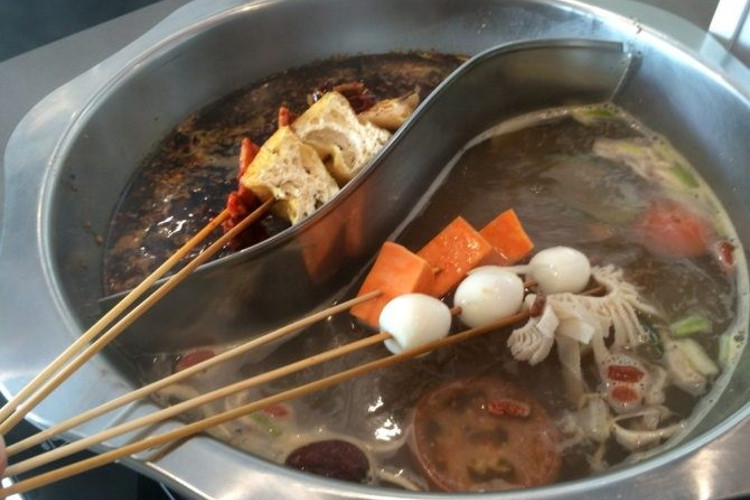
You then take your tray back to your table and wait for your server to bring your massive pot of broth, and your protein selections, all beautifully sliced and plated. Your server will also turn on the element to get your soup bubbling.
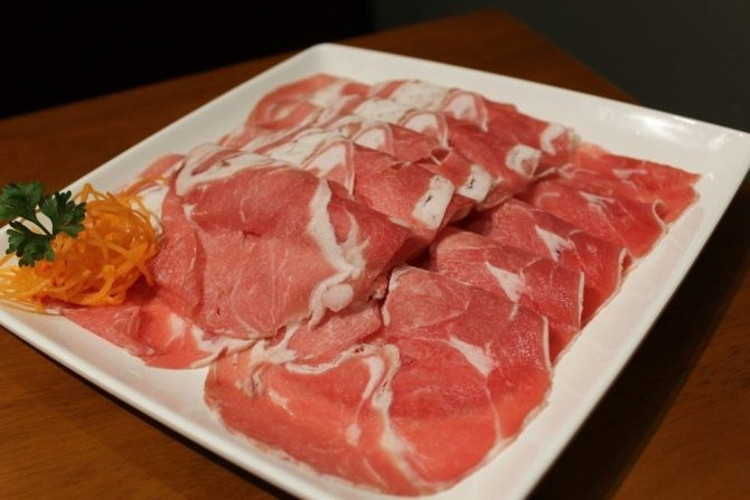
I had ordered a split pot, with half traditional Chongqing spicy broth and half chicken soup. As I waited for the broth to reach a boiling state, I took a look and tasted each side.
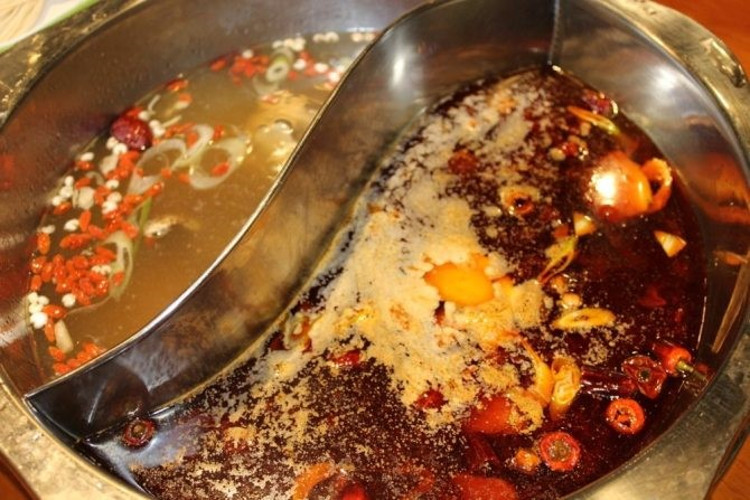
The spicy broth was eye watering, tongue-burning hot, and was full of dried chili peppers, ginger, green onion, Sichuan peppercorns, and chili oil. I would not recommend drinking this, but rather would suggest that you allow its spicy heat to penetrate your ingredients. I went for mild and was practically swooning from the heat (yikes).
The other side reminded me of home-made chicken soup I had as a child. It had intense chicken flavour, as well as some herbal notes. It included pieces of bone-in black or Silkie chicken, which is prized for its medicinal properties, as well as dried red dates, dried goji berries, ginger, green onion, barley, and medicinal roots. All in all, the broth is intended to increase energy, flush toxins, and increase blood circulation. If you are nursing the beginnings of a cold – this is definitely worth a shot to help clear it away!
And then, it’s a matter of putting your ingredients in and waiting until they reach a satisfactory doneness.
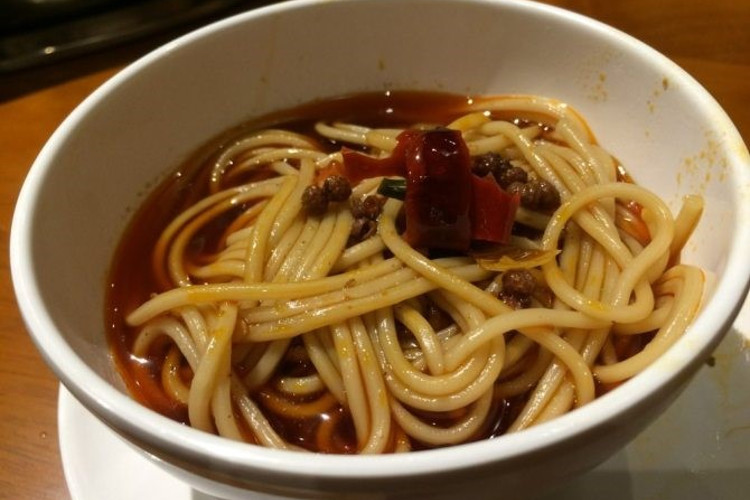
For $2.50, you can also have access to their extensive sauce bar, which allows you to choose and mix together everything from peanuts to mushroom sauce to minced chives. Edamame beans, fruit, and vermicelli salad are also at the bar. With these toppings and side dishes, your meal will be truly complete! I left stuffed, but curious to see what other Sichuan hot pot spots had in store for me.
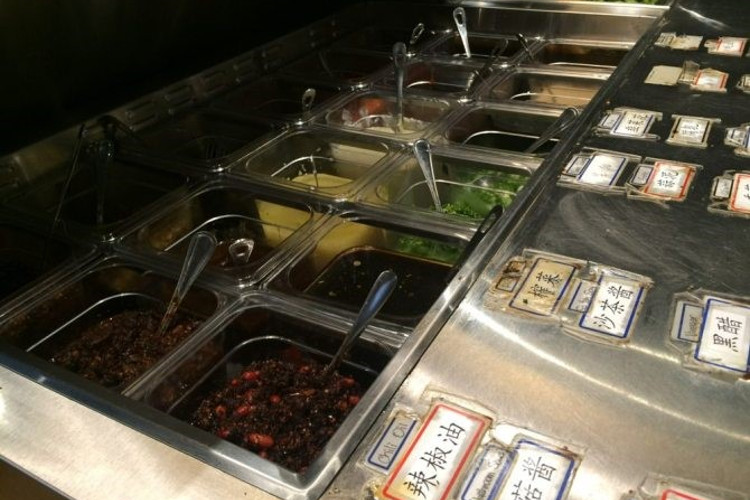
Yuan’s Chuan Chuan Xiang
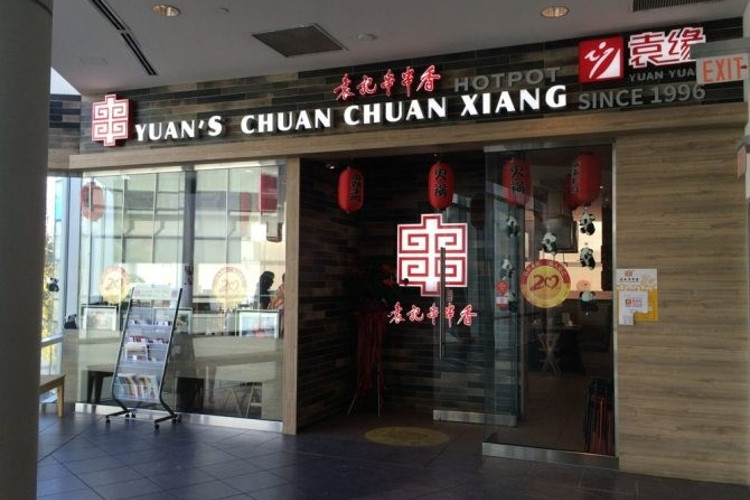
The second hot pot contender is found at the end of a long corridor on the second floor of Aberdeen Centre. Yuan’s Chuan Chuan Xiang is the Richmond location of a chain hailing from Chengdu, Sichuan Province in China, and was founded in 1996. It’s a more intimate space, with booth and table seating, plenty of windows, and an overall chic design aesthetic. Photos of Chengdu can be found throughout the restaurant, highlighting the chain’s origins.
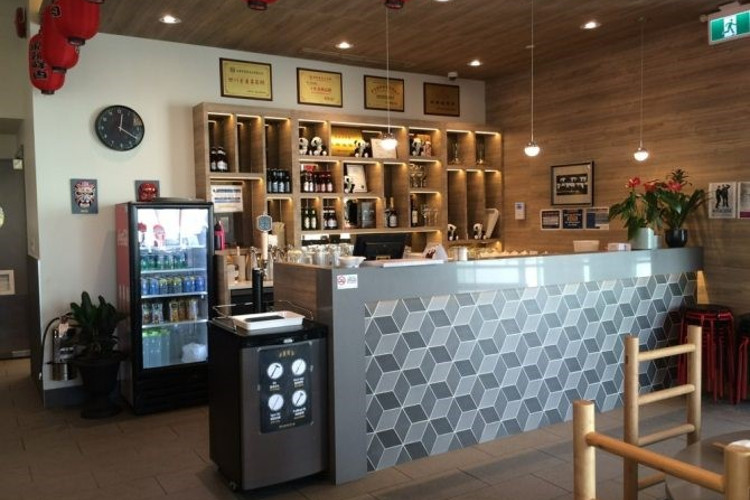
The “chuan chuan xiang” in the restaurant’s name refers to a version of hot pot that puts ingredients on bamboo skewers which are then traditionally cooked in hot spicy oil. I had never tried such a concept, so needless to say, I was really intrigued.
Service here is friendly and very attentive. There’s no fancy computer system at this restaurant, just a sheet for checking off what you want. Broth selections are more limited, with only spicy and non-spicy possible ($9.90 for one flavor or $13.90 for a double flavour pot) and both are pork-based.
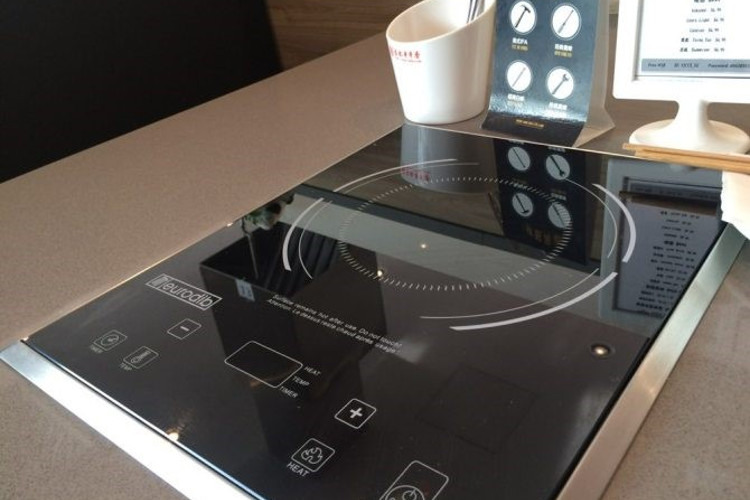
You can then choose from a host of items such as red pepper powder, wide sweet potato vermicelli, black fungus, duck gizzard, and baby cuttlefish (ranging anywhere from $1.99 to $22.90). The main attractions are the “sticks” ($0.90 per stick or $3.99 for 5), which include chicken skin, kelp, duck tongue, rice cakes, and “numbing spicy beef.” Other side dishes like fried rice with egg and xiao long bao are also available ($1.59-$2.99). Like at To Hot, it’s easy to get carried away with the ordering. The individual sticks, though, are a fairly affordable way to try a bunch of different things.
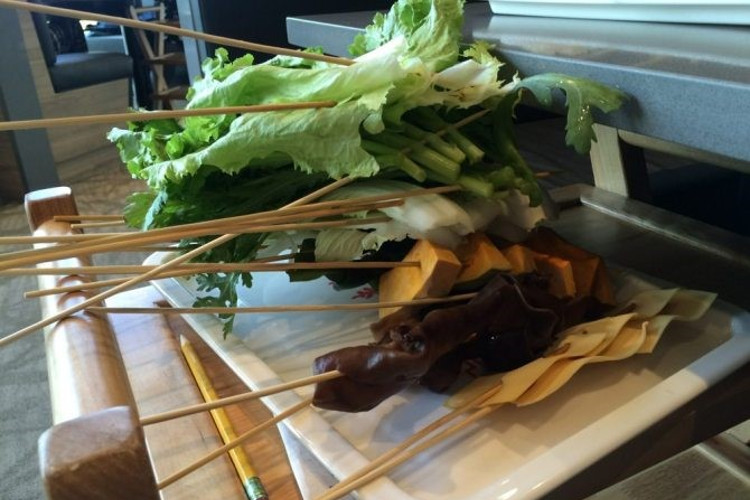
Once you place your order, you won’t have to wait long before your pot of soup arrives, as well as your platter of sticks. The pork broth’s flavor is intensified with ingredients such as tomato, cucumber, green onion, dried red dates, dried goji berries, ginger, and mushrooms.
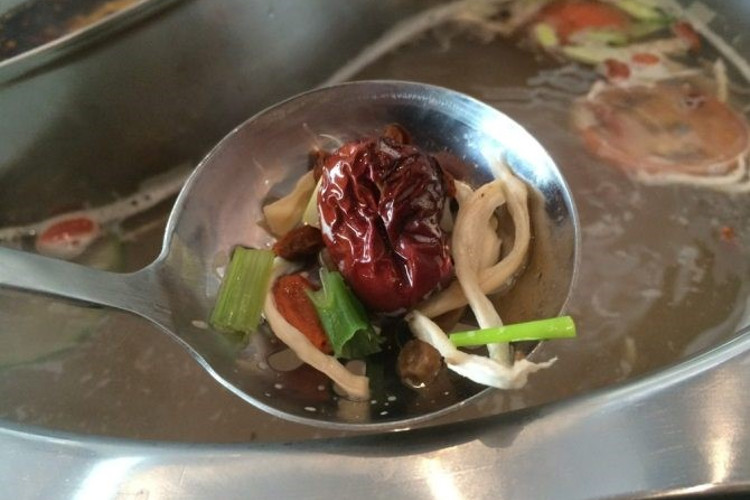
If you’re having the spicy version, your server will bring a packet of premade spicy mixture, imported from Chengdu, and add it to your broth (or one side of the pot). The contents of the package are similar to what was in the spicy broth at To Hot and includes dried chili peppers, peppercorns, star anise, garlic, longan skin, and fermented bean paste. The result is a potently spicy broth.
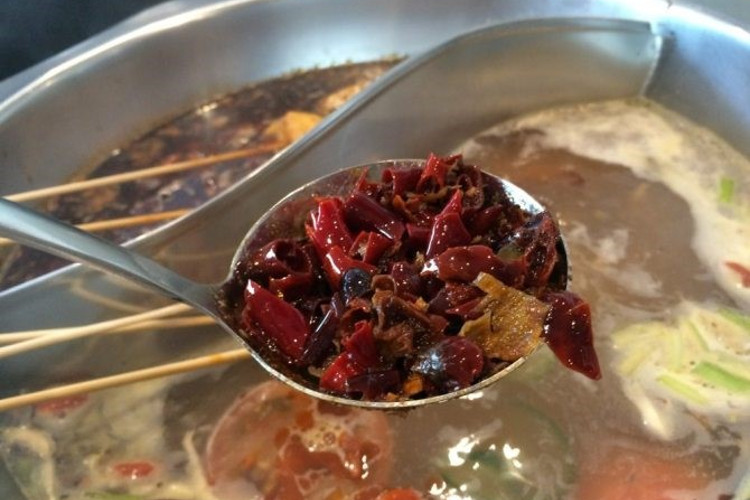
Like any hot pot experience, the key is timing – knowing when to put ingredients into the broth. For instance, harder vegetables, like yam, are going to take longer than seafood items, like shrimp. The beauty though of the sticks is that you can very efficiently add and remove your food without fishing around for them.
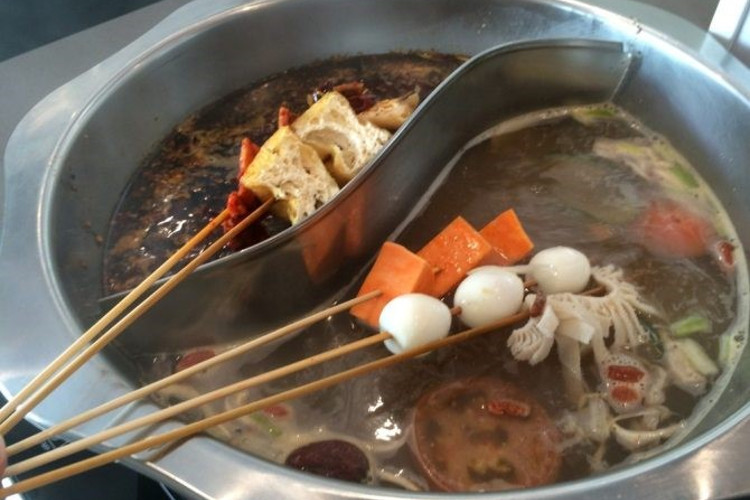
The occasional pieces do fall off the skewers, but for the most part they stay on quite well. I’d also think about what items you want to place in the spicy broth, as more porous ingredients, like tofu will soak up more of the flavour (and heat), while other ones, like quail eggs, won’t.
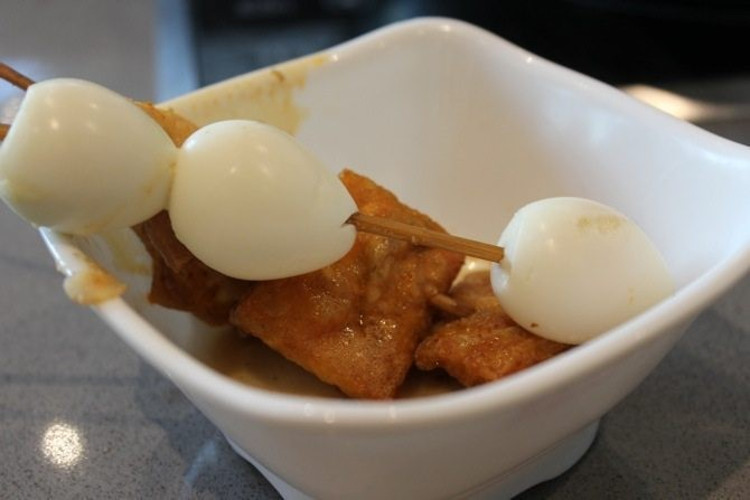
The sauce/seasoning bar ($2.45) has a good selection of options, like oyster sauce, mashed garlic, crushed peanuts, sesame oil, and chopped green onion and coriander.
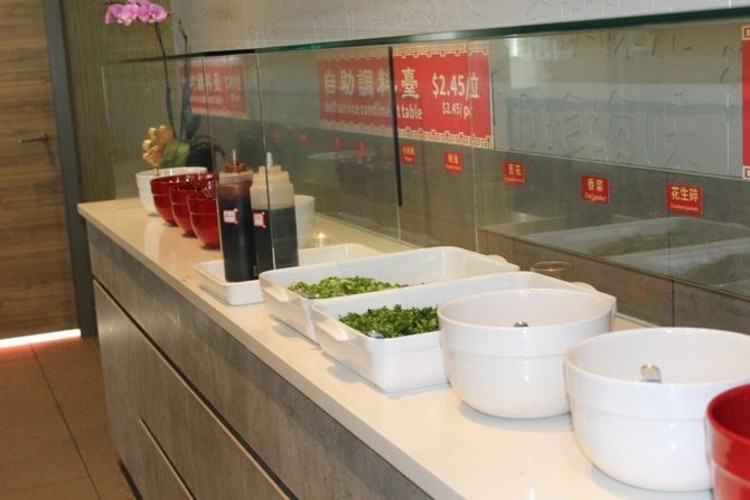
After you remove your food from the skewers, you can dip them in your individualized sauce or drizzle it over top.
The Verdict…
Both places offer excellent and unique hot pot experiences. I really liked the sticks at Yuan’s since I hate losing ingredients in the broth. Both places also use high quality and fresh products. However, I thought the computer system and help-yourself-section at To Hot were really creative and added an extra dimension of fun. Plus, their broth had the slight edge in terms of depth of flavour, and there was more broth selection. Whichever one you choose, just remember – both places take it seriously when it comes to their spicy broth base!

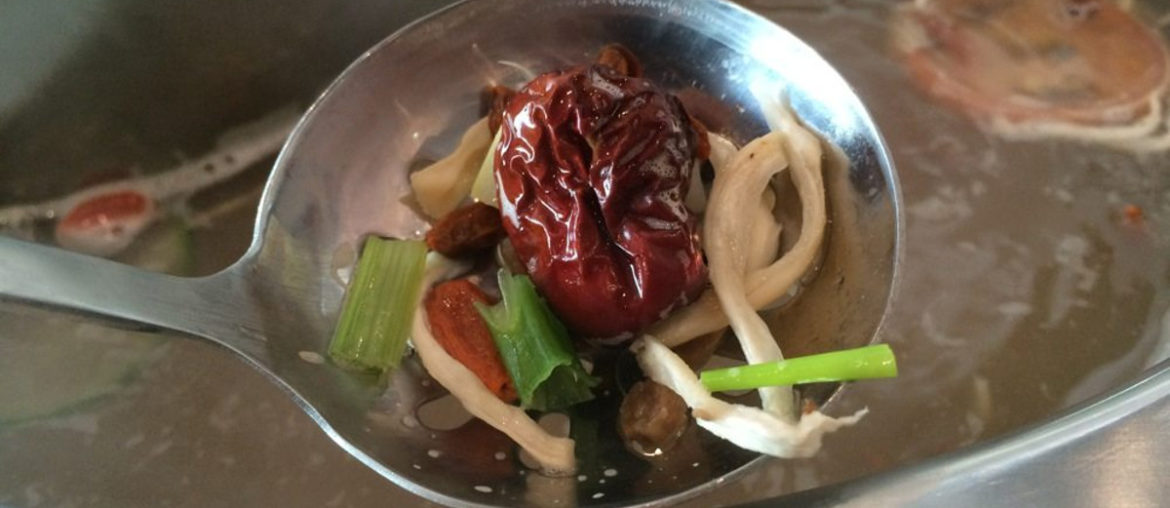

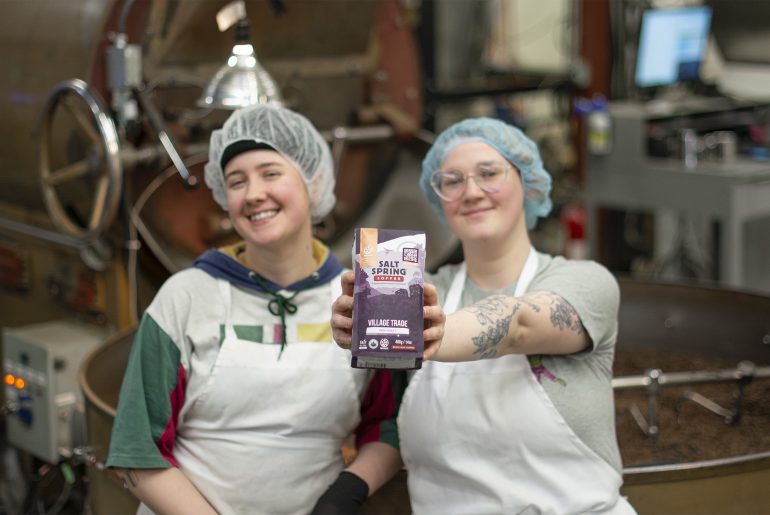

Comments are closed.